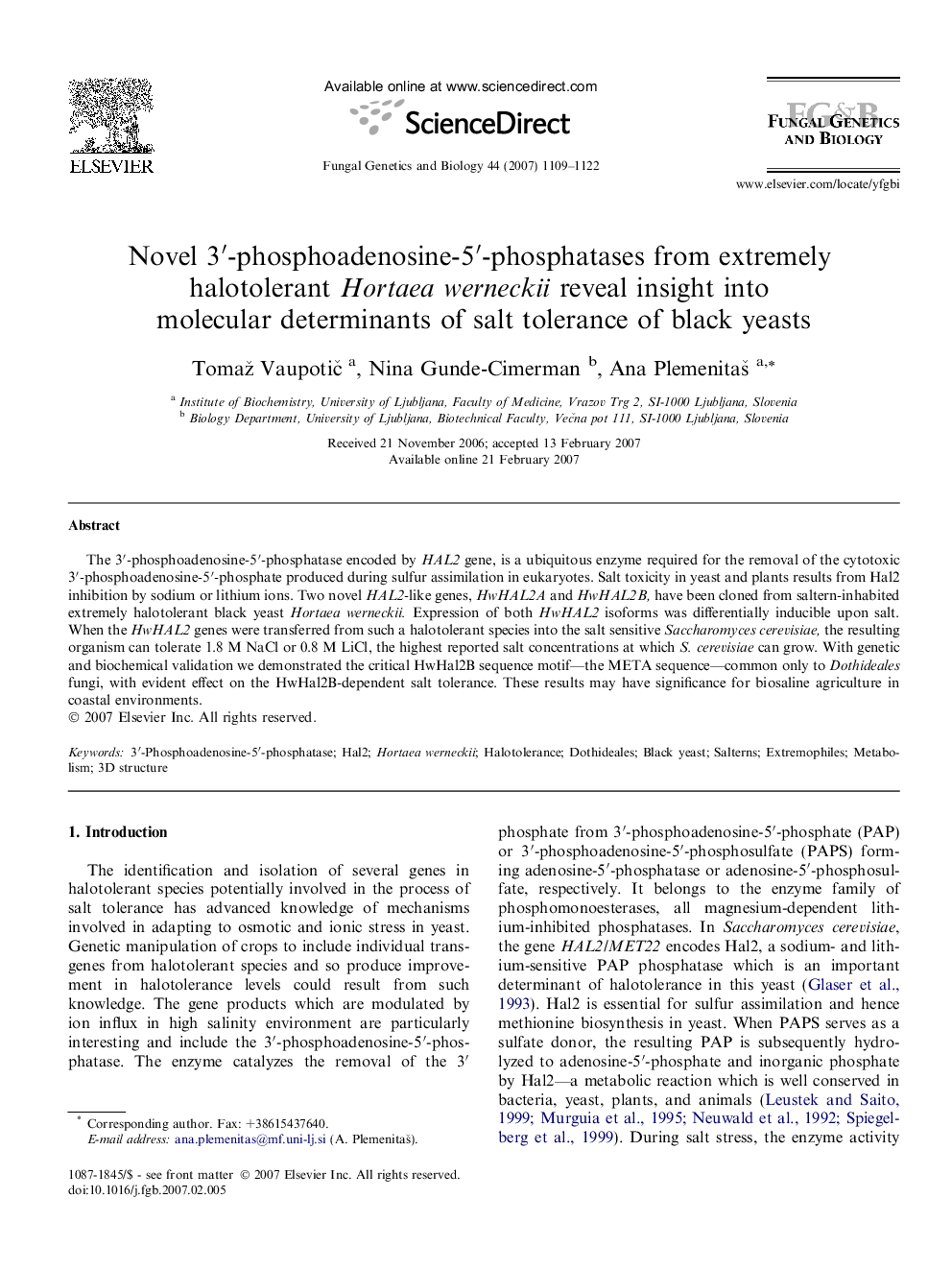| کد مقاله | کد نشریه | سال انتشار | مقاله انگلیسی | نسخه تمام متن |
|---|---|---|---|---|
| 2181655 | 1095314 | 2007 | 14 صفحه PDF | دانلود رایگان |

The 3′-phosphoadenosine-5′-phosphatase encoded by HAL2 gene, is a ubiquitous enzyme required for the removal of the cytotoxic 3′-phosphoadenosine-5′-phosphate produced during sulfur assimilation in eukaryotes. Salt toxicity in yeast and plants results from Hal2 inhibition by sodium or lithium ions. Two novel HAL2-like genes, HwHAL2A and HwHAL2B, have been cloned from saltern-inhabited extremely halotolerant black yeast Hortaea werneckii. Expression of both HwHAL2 isoforms was differentially inducible upon salt. When the HwHAL2 genes were transferred from such a halotolerant species into the salt sensitive Saccharomyces cerevisiae, the resulting organism can tolerate 1.8 M NaCl or 0.8 M LiCl, the highest reported salt concentrations at which S. cerevisiae can grow. With genetic and biochemical validation we demonstrated the critical HwHal2B sequence motif—the META sequence—common only to Dothideales fungi, with evident effect on the HwHal2B-dependent salt tolerance. These results may have significance for biosaline agriculture in coastal environments.
Journal: Fungal Genetics and Biology - Volume 44, Issue 11, November 2007, Pages 1109–1122